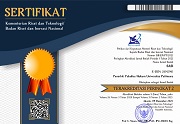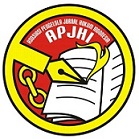PENGARUH PERDAGANGAN BEBAS AFTA DAN ACFTA BAGI INDUSTRI DALAM NEGERI
 )
)
(1) Fakultas Hukum Universitas Pattimura, Indonesia
 Corresponding Author
Corresponding Author
Abstract
ASEAN Free Trade Area (AFTA) is a form of trade cooperation ASEAN region in the form of
an agreement to create a situation that is balanced and fair trade through tariff reduction in
goods trade where there is no tariff barriers (import duty 0-5%) and non-tariff barriers for
country- ASEAN member countries. ACFTA is a free-trade area between ASEAN members and
China. Indonesia as one of the ASEAN member countries still have some obstacles that shows
our unpreparedness to face AFTA, which are: in terms of law enforcement, agencies should
participate facilitate trade and business world often appears to be even indicted for corruption. AFTA brings a number of advantages, namely goods originally manufactured with high costs will be obtained consumers with cheaper prices and a region fully integrated together, the ASEAN region will be more attractive as investment land. What to do Indonesia in order to properly facing AFTA and ACFTA and to compete with other countries are: Promotion and market penetration, increase in efficiency of domestic production, Improved quality of human resources, protection of small industries, and efforts to improve the competitiveness of the agricultural sector
Keywords
DOI
10.47268/sasi.v21i2.186
Published
2015-12-20
How To Cite
@article{SASI186,
author = {Agustina Balik},
title = {PENGARUH PERDAGANGAN BEBAS AFTA DAN ACFTA BAGI INDUSTRI DALAM NEGERI},
journal = {SASI},
volume = {21},
number = {2},
year = {2015},
keywords = {ASEAN Free Trade Area (AFTA); ASEAN-China Free Trade Area (ACFTA); Domestic Industry},
abstract = {ASEAN Free Trade Area (AFTA) is a form of trade cooperation ASEAN region in the form ofan agreement to create a situation that is balanced and fair trade through tariff reduction ingoods trade where there is no tariff barriers (import duty 0-5%) and non-tariff barriers forcountry- ASEAN member countries. ACFTA is a free-trade area between ASEAN members andChina. Indonesia as one of the ASEAN member countries still have some obstacles that showsour unpreparedness to face AFTA, which are: in terms of law enforcement, agencies shouldparticipate facilitate trade and business world often appears to be even indicted for corruption. AFTA brings a number of advantages, namely goods originally manufactured with high costs will be obtained consumers with cheaper prices and a region fully integrated together, the ASEAN region will be more attractive as investment land. What to do Indonesia in order to properly facing AFTA and ACFTA and to compete with other countries are: Promotion and market penetration, increase in efficiency of domestic production, Improved quality of human resources, protection of small industries, and efforts to improve the competitiveness of the agricultural sector},
issn = {2614-2961}, pages = {33--41} doi = {10.47268/sasi.v21i2.186},
url = {https://fhukum.unpatti.ac.id/jurnal/sasi/article/view/186}
}
Afifah Kusumadara, Dilema Perdagangan Bebas ASEAN, Materi Kuliah.
Detikcom, CEPT-AFTA, Implikasi Terhadap Indonesia, File://E:/AFTA/detikcom%20%20%20 CEPT-AFTA%20%20, Implikasi Terhadap Indonesia, 6 Januari 2016.
Direktorat Jendral Kerjasama Perdagangan Internasional Departemen Perdagangan, Gambaran Umum AFTA, http://www.ditjenkpi.go.id, Jakarta, 2006.
http://www.antara.co.id/org/2010/4/4/infrastruktur-dan-sdm-indonesia-belum-siap-hadapi-afta, 27 Mei 2016.
Indosiar, Tak Perlu Cemas Cina Bergabung Dalam AFTA, File://E:/afta/cina-bergabung-dalam-afta,htm, 27 November 2016.
Kompas, FTA Jadi Tantangan Berat, http://cetak.kompas.com/Read/xml/2010/01/02/03550049, 2 Januari 2016.
Tim Liputan 6 SCTV, AFTA diberlakukan, Indonesia diperkirakan kalah bersaing, File://E/afta/indonesia%20kalah%20bersaing.htm, 30 Desember 2009.
US-ASEAN, Business Council, The ASEAN Free Trade Area and Other Areas of ASEAN Economic Cooperatin, http://www.US-ASEAN.org/afta.asp
Cited-By:
1. Akibat Hukum Perjanjian Perdagangan Bebas Di Asean Indonesia-Malaysia
Montayana Meher, Rafiqi, Shulhan Iqbal Nasution, Alvin Hamzah Nasution
Jurnal Ilmiah Penegakan Hukum vol: 11 issue: 1 first page: 81 year: 2024
Type: Journal [View Source]
2. Faktor yang Mempengaruhi Aliran Perdagangan Produk antar Negara ASEAN
Alfirah Fadhilah, Amzul Rifin, Rita Nurmalina
Jurnal Agribisnis Indonesia vol: 12 issue: 2 first page: 215 year: 2024
Type: Journal [View Source]
| Dublin Core | PKP Metadata Items | Metadata for this Document | |
| 1. | Title | Title of document | PENGARUH PERDAGANGAN BEBAS AFTA DAN ACFTA BAGI INDUSTRI DALAM NEGERI |
| 2. | Creator | Author's name, affiliation, country | Agustina Balik; Fakultas Hukum Universitas Pattimura; Indonesia |
| 3. | Subject | Discipline(s) | |
| 3. | Subject | Keyword(s) | ASEAN Free Trade Area (AFTA); ASEAN-China Free Trade Area (ACFTA); Domestic Industry |
| 4. | Description | Abstract | ASEAN Free Trade Area (AFTA) is a form of trade cooperation ASEAN region in the form ofan agreement to create a situation that is balanced and fair trade through tariff reduction ingoods trade where there is no tariff barriers (import duty 0-5%) and non-tariff barriers forcountry- ASEAN member countries. ACFTA is a free-trade area between ASEAN members andChina. Indonesia as one of the ASEAN member countries still have some obstacles that showsour unpreparedness to face AFTA, which are: in terms of law enforcement, agencies shouldparticipate facilitate trade and business world often appears to be even indicted for corruption. AFTA brings a number of advantages, namely goods originally manufactured with high costs will be obtained consumers with cheaper prices and a region fully integrated together, the ASEAN region will be more attractive as investment land. What to do Indonesia in order to properly facing AFTA and ACFTA and to compete with other countries are: Promotion and market penetration, increase in efficiency of domestic production, Improved quality of human resources, protection of small industries, and efforts to improve the competitiveness of the agricultural sector |
| 5. | Publisher | Organizing agency, location | Faculty of Law, Universitas Pattimura |
| 6. | Contributor | Sponsor(s) | |
| 7. | Date | (YYYY-MM-DD) | 2015-12-20 |
| 8. | Type | Status & genre | Peer-reviewed Article |
| 8. | Type | Type | |
| 9. | Format | File format | PDF (Bahasa Indonesia) |
| 10. | Identifier | Uniform Resource Identifier | https://fhukum.unpatti.ac.id/jurnal/sasi/article/view/186 |
| 10. | Identifier | Digital Object Identifier | 10.47268/sasi.v21i2.186 |
| 11. | Source | Title; vol., no. (year) | SASI; Vol 21, No 2 (2015): Volume 21 Nomor 2, Juli - Desember 2015 |
| 12. | Language | English=en | id |
| 13. | Relation | Supp. Files | |
| 14. | Coverage | Geo-spatial location, chronological period, research sample (gender, age, etc.) | |
| 15. | Rights | Copyright and permissions | Copyright: Authors who publish their manuscripts in this Journal agree to the following conditions: 1. The copyright in each article belongs to the author, as well as the right to patent. 2. Authors can enter into separate, additional contractual arrangements for the non-exclusive distribution of the journal's published version of the work (e.g., post it to an institutional repository or publish it in a book), with an acknowledgment of its initial publication in this journal. 3. Authors are permitted and encouraged to post their work online (e.g., in institutional repositories or on their website) before and during the submission process, as it can lead to productive exchanges, as well as earlier and greater citation of published work. 4. Authors have the right to self-archiving of the article (Author Self-Archiving Policy)
License: The SASI Journal is disseminated based on the Creative Commons Attribution-NonCommercial 4.0 International license terms. This license allows anyone to copy and redistribute this material in any form or format, compose, modify, and make derivatives of this material for any purpose. You cannot use this material for commercial purposes. You must specify an appropriate name, include a link to the license, and certify that any changes have been made. You can do this in a way that is appropriate but does not imply that the licensor supports you or your use.
|
Copyright (c) 2019 Agustina Balik

This work is licensed under a Creative Commons Attribution-NonCommercial 4.0 International License.
Cited-By:
1. Akibat Hukum Perjanjian Perdagangan Bebas Di Asean Indonesia-Malaysia
Montayana Meher, Rafiqi, Shulhan Iqbal Nasution, Alvin Hamzah Nasution
Jurnal Ilmiah Penegakan Hukum vol: 11 issue: 1 first page: 81 year: 2024
Type: Journal [View Source]
2. Faktor yang Mempengaruhi Aliran Perdagangan Produk antar Negara ASEAN
Alfirah Fadhilah, Amzul Rifin, Rita Nurmalina
Jurnal Agribisnis Indonesia vol: 12 issue: 2 first page: 215 year: 2024
Type: Journal [View Source]

 : 16355 times
: 16355 times Download : 8685 times
Download : 8685 times
















